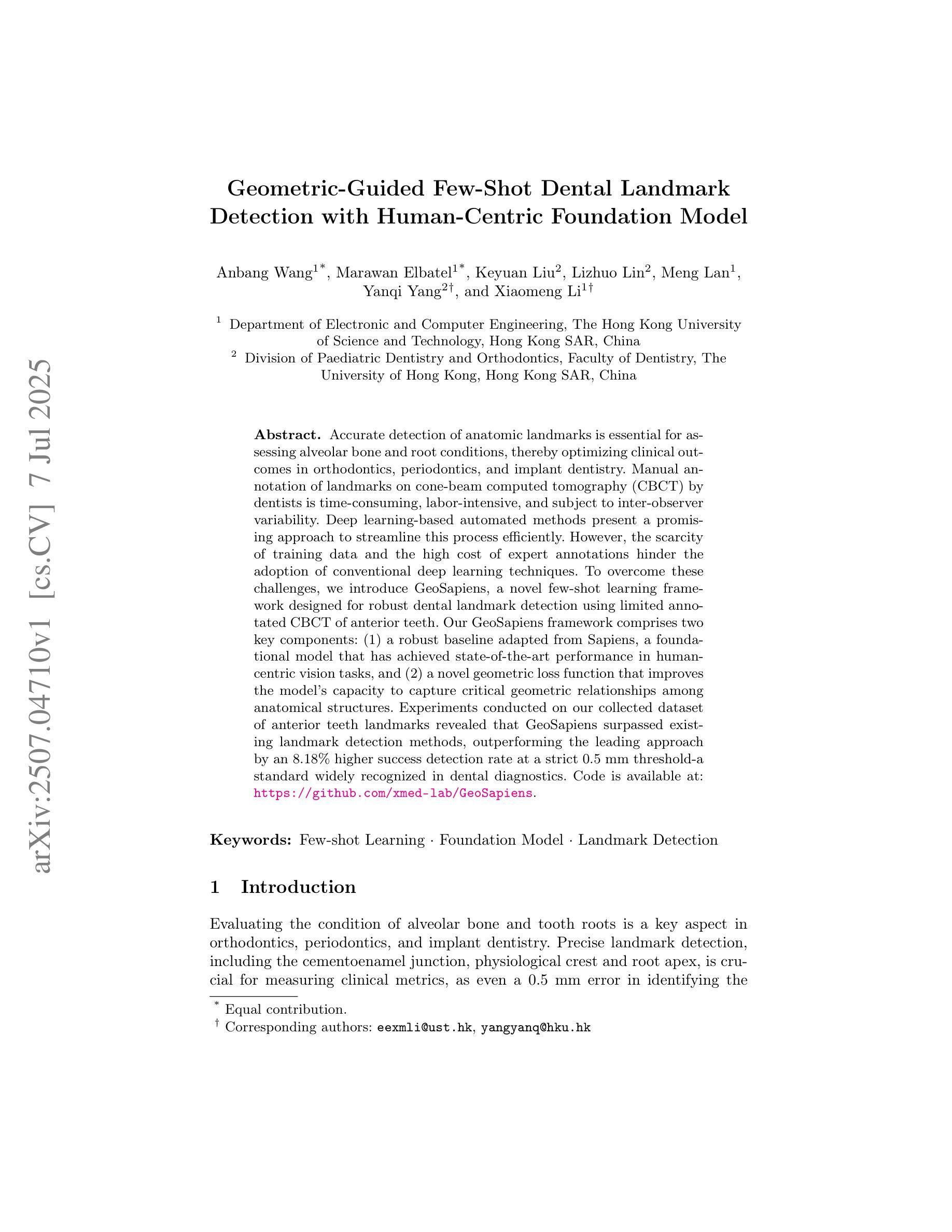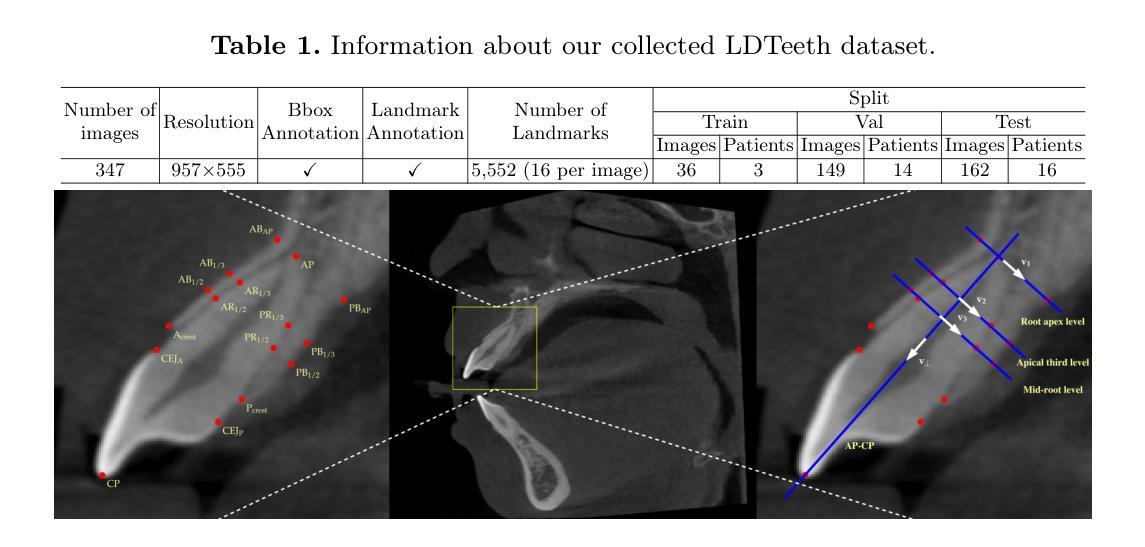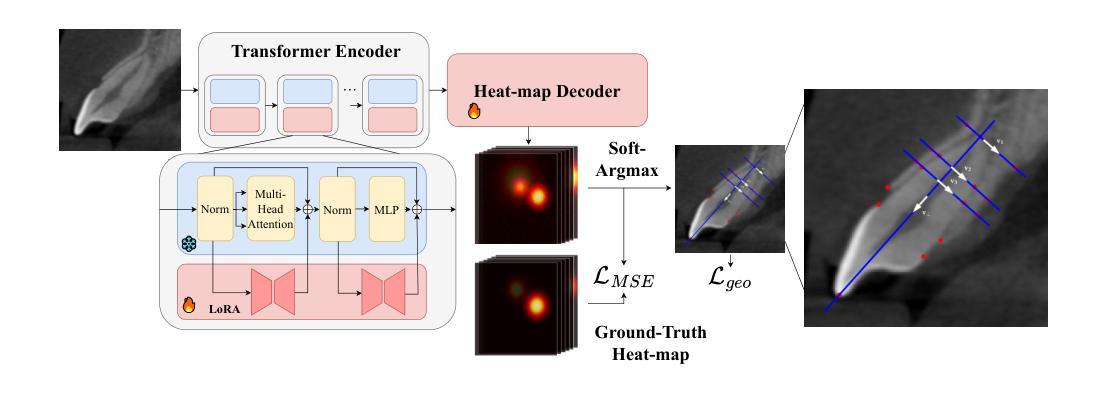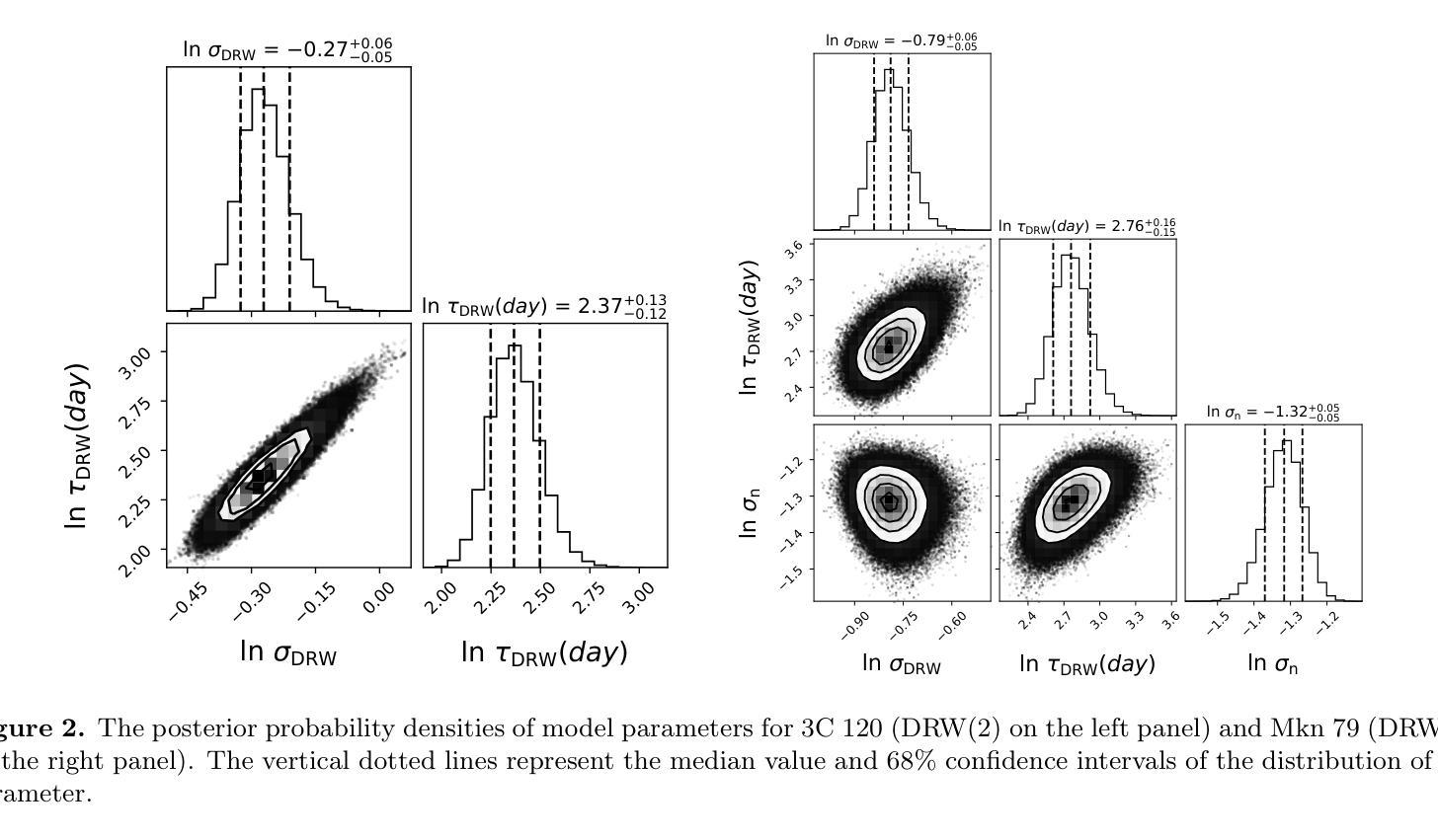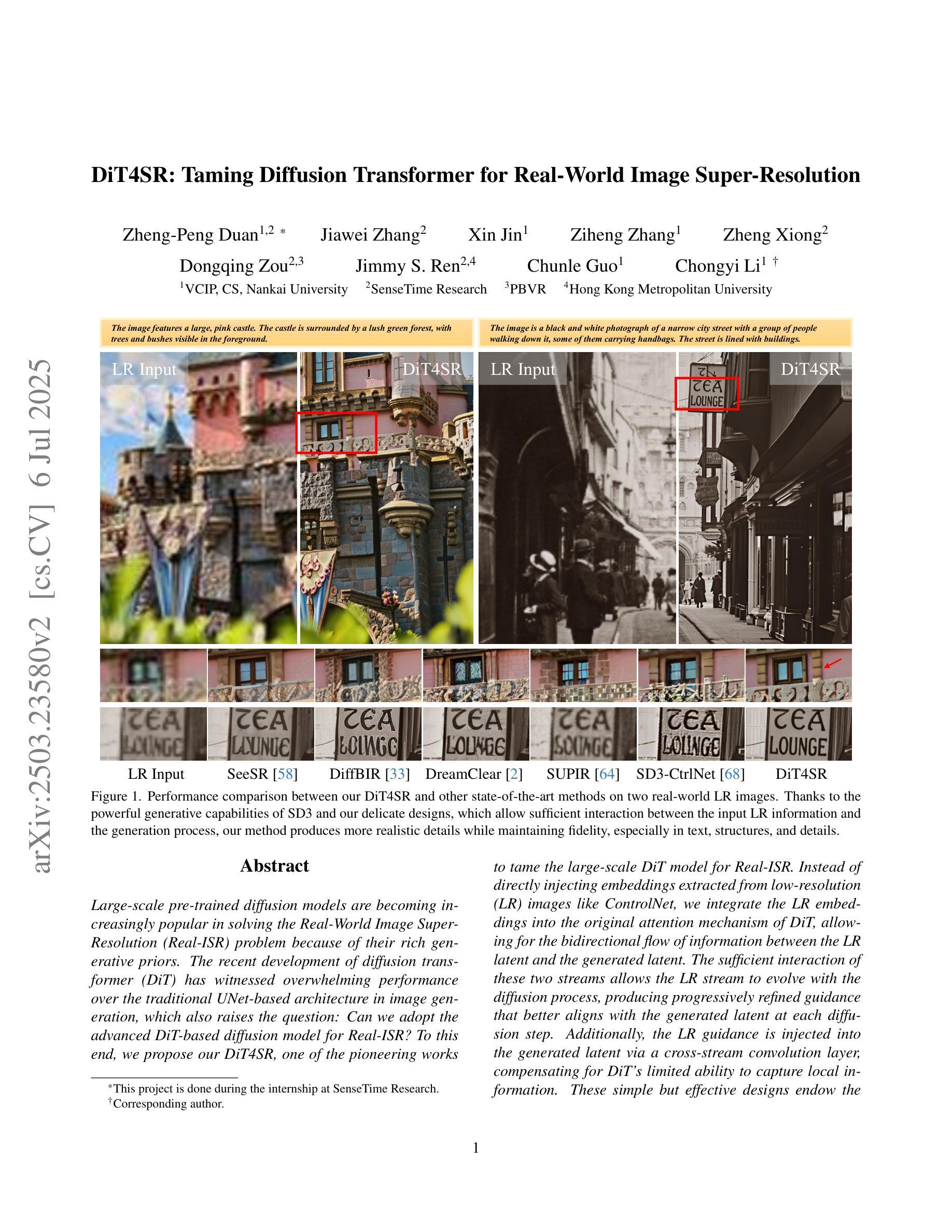⚠️ 以下所有内容总结都来自于 大语言模型的能力,如有错误,仅供参考,谨慎使用
🔴 请注意:千万不要用于严肃的学术场景,只能用于论文阅读前的初筛!
💗 如果您觉得我们的项目对您有帮助 ChatPaperFree ,还请您给我们一些鼓励!⭐️ HuggingFace免费体验
2025-07-09 更新
Geometric-Guided Few-Shot Dental Landmark Detection with Human-Centric Foundation Model
Authors:Anbang Wang, Marawan Elbatel, Keyuan Liu, Lizhuo Lin, Meng Lan, Yanqi Yang, Xiaomeng Li
Accurate detection of anatomic landmarks is essential for assessing alveolar bone and root conditions, thereby optimizing clinical outcomes in orthodontics, periodontics, and implant dentistry. Manual annotation of landmarks on cone-beam computed tomography (CBCT) by dentists is time-consuming, labor-intensive, and subject to inter-observer variability. Deep learning-based automated methods present a promising approach to streamline this process efficiently. However, the scarcity of training data and the high cost of expert annotations hinder the adoption of conventional deep learning techniques. To overcome these challenges, we introduce GeoSapiens, a novel few-shot learning framework designed for robust dental landmark detection using limited annotated CBCT of anterior teeth. Our GeoSapiens framework comprises two key components: (1) a robust baseline adapted from Sapiens, a foundational model that has achieved state-of-the-art performance in human-centric vision tasks, and (2) a novel geometric loss function that improves the model’s capacity to capture critical geometric relationships among anatomical structures. Experiments conducted on our collected dataset of anterior teeth landmarks revealed that GeoSapiens surpassed existing landmark detection methods, outperforming the leading approach by an 8.18% higher success detection rate at a strict 0.5 mm threshold-a standard widely recognized in dental diagnostics. Code is available at: https://github.com/xmed-lab/GeoSapiens.
精确检测解剖标志点是评估牙槽骨和牙根状况的关键,有助于优化正畸、牙周病和种植牙的临床效果。牙医在锥形束计算机断层扫描(CBCT)上手动标注这些标志点耗时耗力,且存在观察者间差异。基于深度学习的自动化方法有望简化这一流程,提高效率。然而,训练数据的稀缺和专家标注的高成本阻碍了传统深度学习技术的采用。为了克服这些挑战,我们引入了GeoSapiens,这是一个为稳健的牙齿标志点检测而设计的新型小样本学习框架,使用有限的标注CBCT前牙数据。我们的GeoSapiens框架包含两个关键组成部分:(1)一个稳健的基线,它基于Sapiens模型,该模型在人本视觉任务中达到了最先进的性能;(2)一个新型几何损失函数,提高模型捕捉关键几何关系的能力,改善了解剖结构间的联系。在我们收集的前牙标志点数据集上进行的实验表明,GeoSapiens超越了现有的标志点检测方法,在严格的0.5毫米阈值标准下,其成功检测率比领先的方法高出8.18%,这一标准在牙科诊断中得到了广泛认可。相关代码可访问:https://github.com/xmed-lab/GeoSapiens。
论文及项目相关链接
PDF MICCAI 2025
摘要
本文强调精确检测解剖学标志对于评估牙槽骨和牙根状况的重要性,并指出手动标注锥束计算机断层扫描(CBCT)上的标志耗时、劳力密集且存在观察者间变异。深度学习为基础的自动化方法能高效简化此过程,但由于训练数据稀缺和专家标注成本高,常规深度学习技术难以应用。为应对这些挑战,本文提出GeoSapiens,一种为稳健牙齿标志检测而设计的新型小样本学习框架,适用于有限标注的前牙CBCT。GeoSapiens框架包含两个关键部分:一是从在人体视觉任务中表现卓越的Sapiens基础模型改编的稳健基线,二是能提高模型捕捉解剖结构间关键几何关系能力的新型几何损失函数。对收集的前牙标志数据集的实验表明,GeoSapiens在标志检测方面超越了现有方法,在严格的0.5毫米阈值标准下,其成功检测率比领先方法高出8.18%,这一标准在牙科诊断中广受认可。
要点
- 解剖学标志的准确检测对于牙科领域的多方面评估至关重要。
- 手动在CBCT上标注标志存在诸多不足,如耗时、劳力密集和观察者间变异。
- 深度学习自动化方法有望高效简化此过程。
- 面临训练数据稀缺和专家标注成本高的挑战。
- 引入GeoSapiens框架,适用于有限标注的前牙CBCT的稳健牙齿标志检测。
- GeoSapiens框架包含基于Sapiens基础模型的稳健基线和新型几何损失函数。
- 实验表明,GeoSapiens在牙齿标志检测方面表现优异,成功检测率高于现有方法。
点此查看论文截图
